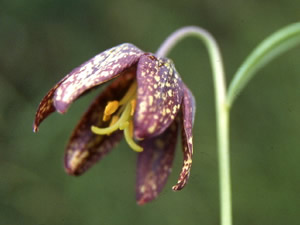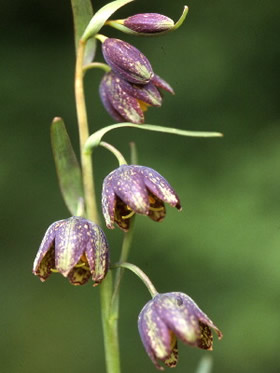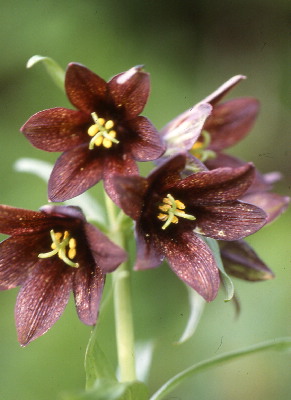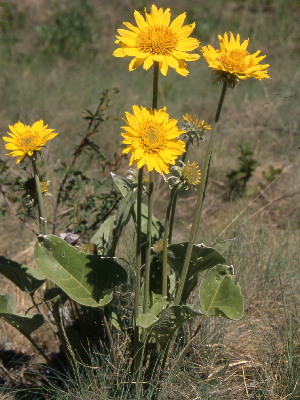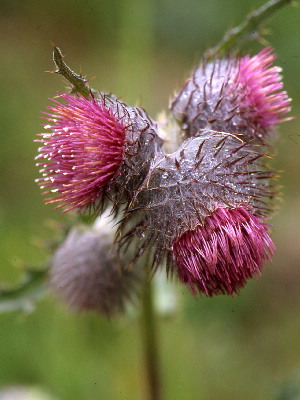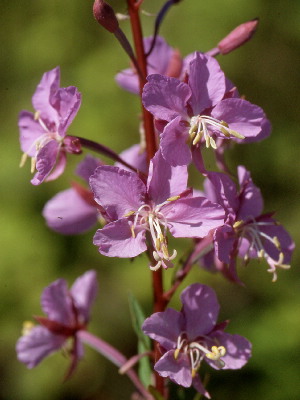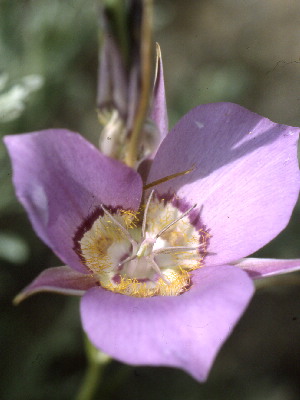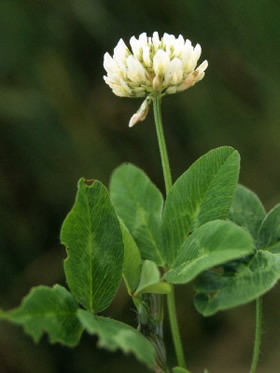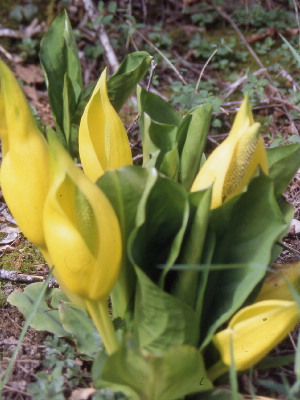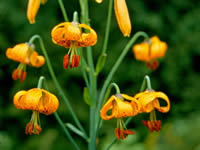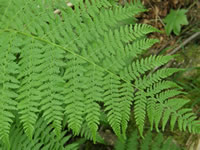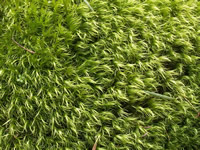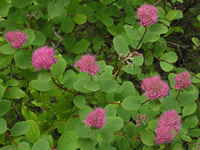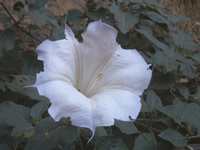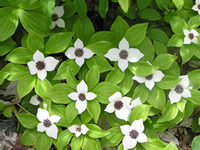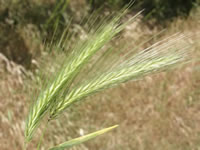|
__ |
|
The Chocolate Lily, Fritillaria lanceolata, usually carries a single flower with 2 or 3 being rather a rarity. More than three is most unusual.
|
This lily is a perennial plant with a simple stem from a large scaly bulb surrounded by bulblets resembling grains of rice. This gives the plant another common name of Rice root. These bulbs cooked or steamed are a source of a nutritious food. It enjoys the coastal zone with grassy slopes and open woods. |
|
|
|
|
__ |
Black Lily, Fritillaria camschatcensis
This is often a staple food in areas where it grows wild. The bulb when cooked is like baked chestnuts. The bulb can also be dried and ground up and used as a flour for making bread. It best harvested in the fall. The seed pods can be eaten raw or cooked but they are bitter.
|
| |
|
|
|
|
Balsam Root, Balsamorrhiza species
A bright showy sunflower plant with solitary heads of yellow flowers. The leaves are large and basal and mostly triangular or heart shaped. Open dry hills and slopes are where you will find this sun loving plant. The ripe seed when pounded is quite palatable. The whole seed can also be eaten and the fleshy roots, when roasted are quite pleasant. |
| |
|
|
| Dandelion, Taraxacum species
This is a well-known plant and the scourge of the garden. It has a long tap root that is difficult to remove. The yellow flowers are well known also. The green leaves may be used as a salad or cooked like greens, although the water should be changed to remove the bitterness. The roots also can go into a salad. The roots can also be made as a beverage, a substitute for coffee. |
|
|
| |
|
Edible Thistle, Cirsium species
This is a tall biennial plant with prickly leaves and a heavy cluster of mauve to purple flowers. Usually found at higher levels along roadsides and open areas. The roots are considered a useful source of food and all thistles have none poisonous properties. |
| |
|
|
|
__ |
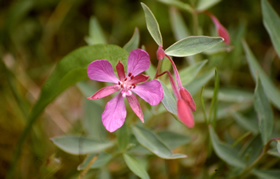 |
Fireweed, Epilobium angustifolium, on the left and Broad-leaved Willowherb, Epilobium Latifolium, above.
Epilobium angustifolium is well known as Fireweed it is also called Great willow herb. This plant can grow to six feet with lance shaped leaves resembling willow. The flowers are very showy and pink to purple on long spike like clusters. The young leaves can be used as greens and the dried leaves may be used to make a beverage. |
| |
|
|
| Kinnikinnick or Bearberry,
Arctostaphylos uva-ursi
This is an evergreen trailing shrub that forms a low covering mat like growth. The flowers are pink and are in nodding clusters which form red or reddish berries. These berries when raw are rather tasteless but quite palatable when they are cooked. |
__ |
|
| |
|
Mariposa Lily, Calochortus macrocarpus
This lily is a perennial plant from a bulb about the size of a walnut. The plant has grass like leaves and usually one flower which is showy with three petals. It enjoys grassy slopes and can stand a hot climate. The bulb are palatable and nutritious when boiled, roasted or steamed. |
| |
|
|
|
__ |
|
|
Clover, Trifolium species
Most people know what clovers look like, and seek hoping to find a four leafed clover when they are only three leaflets. They occur in many different habitats from fields to bluffs. There are numerous species with the red clover being the most commonly recognized. The roots are said to be sweet and pleasant. The leaves can be used in a salad. |
| |
|
|
|
__ |
|
Yellow Arum, Lysichiton americanum
Skunk Cabbage is another common name for this perennial plant. The leaves are large and succulent with deeply impressed leaves. It grows in swampy conditions in the shade. The roots when dried and ground into a flour makes an emergence ration. The young leaves as they appear above the ground make an agreeable pot herb. |
|
Cat-tail, Typha latifolia
The Cat-tail is a very well-known marsh or wetlands plant that enjoys the shallow water of lakes and ponds. A perennial with sword like leaves and growing to five feet or more. The flowers are in a spike like a bottle brush and brown in colour. Its young shoots are stripped of the outer layer with the white inner making a pleasant food. |
| |
|
|
|
|
Silverweed, Poetentilla answerina
The Silverweed is a low growing perennial plant that spreads by runners. The leaves are feather like and silvery underneath and green above with showy bright yellow flowers. Its favorite habitat is along the coast in moist areas and wet soils inland. The roots are edible and wholesome and when boiled or roasted taste like parsnips. |
| |
|
|
|
__ |
Siberian Miner's-lettuce, Montia sibirica
This is one of two succulent members of the Purslane family of plants, which is also known as the moss roses.
It grows best in sandy soils of shaded areas from California to Alaska. Both this one and Montia perfoliata have long provided a vitamin rich greens for native people as well as gold rush miners. |
| |
|
|
| Sheep Sorrel, Rumex acetosella
This is a weedy perennial plant with simple and erect stems to 12 inches high. The leaves are mainly basal and are narrow and lobed at the base like an arrow. The flowers are rather small and insignificant and reddish in color. The leaves of the young plant are refreshing when eaten raw. They can be substituted for sour things in soups and sauces. |
__ |
|
|


